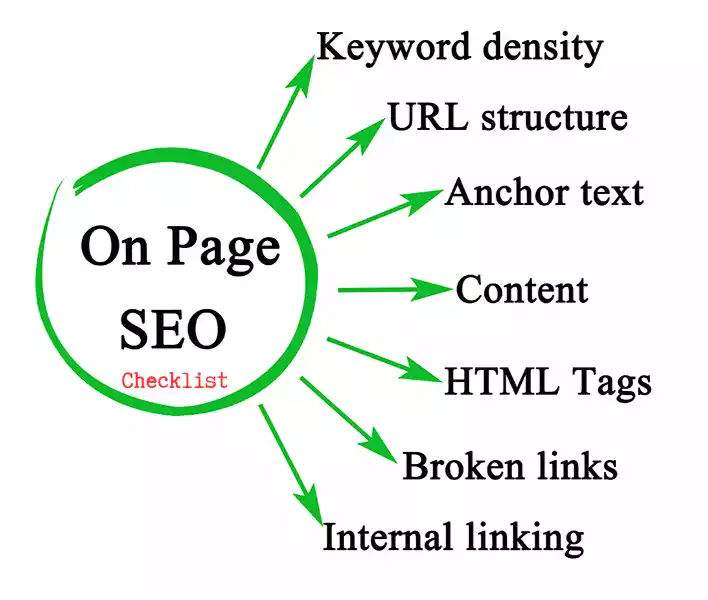On-page SEO is crucial for improving your website’s visibility in search engine results, ensuring that your content is accessible, relevant, and engaging to your audience. By optimizing individual web pages, you can drive more organic traffic, enhance user experience, and achieve higher search engine rankings. Below is a comprehensive On-Page SEO Checklist, detailing essential tasks, tools, resources, benefits, and how to use them effectively.
| NO# | Task | Description | Tools | How to Use | Benefit |
|---|---|---|---|---|---|
| 1 | Keyword Research | Identify primary and secondary keywords. | Google Keyword Planner, SEMrush, Ahrefs | Use keyword research tool to find relevant keywords and integrate them into your content. | Target relevant searches and drive traffic. |
| 2 | Search Intent Analysis | Understand the intent behind search queries. | Google Search, AnswerThePublic | Analyze search results and user questions to tailor content to search intent. | Ensure content meets user needs. |
| 3 | Title Tag Optimization | Include primary keyword in the title tag. Keep under 60 characters. | Yoast SEO, Moz, SEMrush | Optimize title tags in Yoast SEO by including primary keywords and maintaining character limits. | Improve click-through rates (CTR). |
| 4 | Meta Description | Write compelling meta descriptions. Include keywords. | Yoast SEO, Moz, SEMrush | Craft meta descriptions in Yoast SEO that include keywords and are under 160 characters. | Enhance CTR and provide a summary. |
| 5 | Header Tags | Use H1, H2, H3 tags with keywords appropriately. | WordPress | Structure content using H1 for the main title and H2/H3 for subheadings, incorporating keywords. | Improve readability and SEO structure. |
| 6 | URL Structure | Use short, descriptive URLs with keywords. | Yoast SEO, Moz, SEMrush | Ensure URLs are concise and include relevant keywords, avoiding special characters. | Enhance user experience and SEO. |
| 7 | Content Optimization | Use keywords naturally in content. Include synonyms and related terms. | Grammarly, Hemingway, Clearscope | Optimize content by naturally integrating keywords and using tools like Grammarly to enhance readability. | Increase relevance and readability. |
| 8 | Image Optimization | Use descriptive file names and alt tags. Compress images. | TinyPNG, ImageOptim | Compress images before uploading and add descriptive alt tags using Smush. | Improve page load speed and accessibility. |
| 9 | Internal Linking | Link to relevant pages within the site. | Screaming Frog, Ahrefs, Moz | Create internal links to related content, using tools like Screaming Frog to identify linking opportunities. | Boost page authority and user navigation. |
| 10 | External Linking | Link to authoritative external sites. | Moz, Ahrefs | Link to high-authority sites to provide additional context and value to users. | Improve credibility and relevance. |
| 11 | Mobile Optimization | Ensure the site is mobile-friendly. | GTmetrix | Test site with Google Mobile-Friendly Test and make necessary adjustments for better mobile performance. | Enhance mobile user experience and rankings. |
| 12 | Page Speed Optimization | Improve site loading speed. | Google PageSpeed Insights, GTmetrix | Use Google PageSpeed Insights to identify speed issues and optimize accordingly. | Reduce bounce rates and improve rankings. |
| 13 | Schema Markup | Implement structured data for rich snippets. | Google Structured Data Helper, Schema Pro | Add schema markup using tools like Schema Pro to enable rich snippets in search results. | Enhance search result visibility. |
| 14 | Social Sharing Buttons | Add social sharing buttons to content. | ShareThis | Integrate social sharing buttons with ShareThis to encourage sharing of your content. | Increase content reach and engagement. |
| 15 | Content Freshness | Regularly update content with new information. | Google Calendar, Trello | Schedule regular content updates in Trello to keep information current. | Maintain relevance and rankings. |
| 16 | Readability | Ensure content is easy to read and understand. | Hemingway, Grammarly | Use Hemingway to simplify complex sentences and enhance readability. | Improve user engagement and time on page. |
| 17 | Content-Length | Ensure comprehensive content (minimum 800-1000 words). | Google Docs, Microsoft Word | Aim for longer content that covers topics in depth, using word processors to track length. | Improve search rankings and user engagement. |
| 18 | Multimedia Integration | Use videos, infographics, and images to enrich content. | Canva, YouTube, Vimeo | Create and embed multimedia elements to make content more engaging. | Increase user engagement and time on site. |
| 19 | Keyword Density | Maintain appropriate keyword density (1-2%). | Yoast SEO, SEMrush | Check keyword density in Yoast SEO and adjust content to maintain balance. | Avoid keyword stuffing and enhance SEO. |
| 20 | Outbound Links | Include outbound links to authoritative sources. | Ahrefs, Moz | Add relevant outbound links to enhance the trustworthiness of your content. | Enhance content credibility and SEO. |
| 21 | Alt Text | Add alt text to all images. | WordPress | Use descriptive alt text for images to improve SEO and accessibility. | Improve accessibility and image SEO. |
| 22 | User Engagement Metrics | Monitor metrics like bounce rate and time on page. | Google Analytics, Hotjar | Use Google Analytics to track engagement metrics and adjust content to improve performance. | Understand user behavior and optimize accordingly. |
| 23 | Broken Links | Identify and fix broken links on your site. | Screaming Frog, Ahrefs | Regularly scan for broken links with Screaming Frog and fix them promptly. | Improve user experience and SEO. |
| 24 | Content Formatting | Use bullet points, numbered lists, and short paragraphs. | WordPress | Format content to be scannable using bullet points and short paragraphs. | Enhance readability and user experience. |
| 25 | Dwell Time | Increase the time users spend on your site. | WordPress | Create engaging, informative content that keeps users on the page longer. | Improve search rankings and engagement. |
| 26 | Meta Keywords | Use meta keywords appropriately. | Yoast SEO | Add relevant meta keywords in the SEO plugin settings. | Provide additional context for search engines. |
| 27 | Content Sharing | Encourage sharing through email and social media. | Mailchimp, Hootsuite | Use email campaigns and social media scheduling tools to promote content. | Increase content reach and engagement. |
| 28 | Interactive Elements | Add quizzes, polls, and other interactive content. | Typeform, SurveyMonkey | Integrate interactive elements to make content more engaging and participatory. | Boost user engagement and interaction. |
| 29 | Local SEO | Optimize content for local search queries. | Google My Business, BrightLocal | Include local keywords and create location-specific content. | Attract local traffic and improve local rankings. |
| 30 | Readability Scores | Aim for high readability scores. | Yoast SEO, Hemingway | Use readability tools to ensure content is easy to read and understand. | Improve user comprehension and engagement. |
| 31 | Internal Search Optimization | Optimize your site’s internal search functionality. | Link Whisper | Enhance internal search algorithms to provide better results for site users. | Improve user experience and content discovery. |
| 32 | Featured Snippets | Optimize content to appear in featured snippets. | SEMrush, Ahrefs | Structure content to answer common questions and use lists/tables for featured snippets. | Increase visibility and CTR. |
| 33 | User Feedback | Collect and implement user feedback on content. | Hotjar, SurveyMonkey | Use feedback tools to gather user insights and adjust content based on feedback. | Improve content relevance and user satisfaction. |
By following this comprehensive On-Page SEO Checklist, you can ensure that your web pages are fully optimized for search engines and provide a better user experience. Implement these tasks using the recommended tools and resources to enhance your site’s visibility, drive more organic traffic, and achieve higher rankings in search engine results. Start optimizing your on-page SEO today to maximize your website’s potential and reach your target audience effectively.





